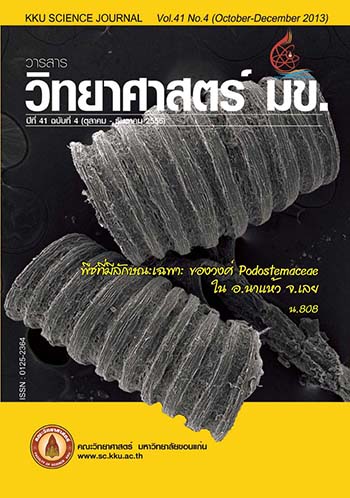The Peculiar Plants of Podostemaceae in Na Haeo District, Loei Province
Main Article Content
Abstract
The Podostemaceae is the largest family of aquatic angiosperms. Because of the unusual morphology of the plant body, it is difficult to demarcate into stem and root. Doublefertilization and endosperm production, two defining features of angiosperms, do not occur in the family. They grow only in open, sunlit areas, attaching to rocks or hard substrata in beds of rivers, rapids or waterfalls that are subject to seasonal changes in water level. The vegetative plants are immersed in rapidly flowing water in the rainy season. As the water level recedes towards the close of the rainy season, the plants form flowers, which open as exposing to air. Fruits and seeds quickly develop. The plants will soon die if they are placed in standing water or in muddy substratum. If the environmental changes cause high water level or drought all year round, the plants would be incapable of existence and finally might be lost. Podostemaceae consists of three subfamilies which are Podostemoideae, Tristichoideae and Weddellinoideae. The subfamily Weddellinoideae is not present in Thailand. Approximately 54 genera and 300 species worldwide are distributed in the tropical and subtropical regions. Most of them are endemic. Out of 47 species, thirty-four species and 3 varieties are endemic in Thailand. In Na
Haeo district, Loei province Hydrobryum tardhuangense M. Kato and H. loeicum M. Kato grow in rapids and waterfalls along Hueang River. The former species is also distributed in Lao PDR and considered to be threatened while the latter species is endemic to Thailand and considered to be endangered according to the conservation status.
Article Details

This work is licensed under a Creative Commons Attribution-NonCommercial-NoDerivatives 4.0 International License.


